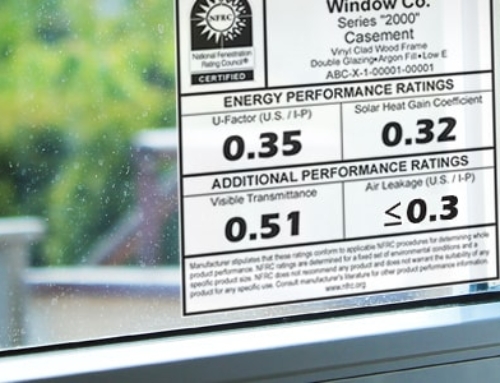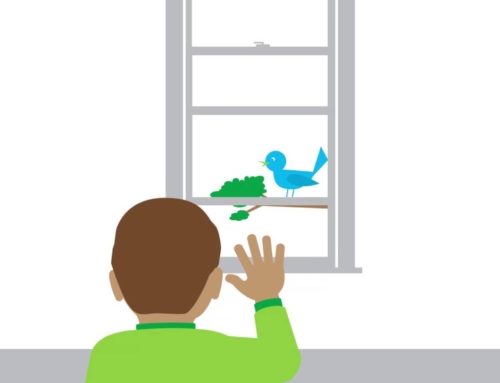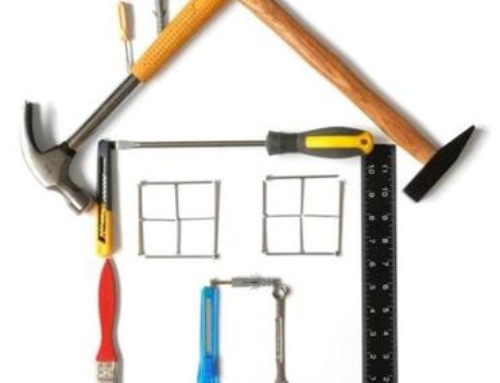Easy upgrades to keep cool this summer from This Old House
We value windows for their transparency, the way their panes let in light and give us a view of the outdoors. But those panes of glass are also transparent to heat, as anyone who’s stepped into a greenhouse on a sunny day can attest. In winter, we relish the way incoming sunlight warms our bodies and surroundings. It’s a different story in summer, when the solar heat streaming through windows—particularly those on the south- and west-facing sides of a house—turns rooms into saunas. Here are some ways to halt that heat gain and be more comfortable when temperatures soar:
Consider solar shades. These light-blocking, polyester-coated mesh screens can be installed inside or out, either as fixed panels or with retractable roll-up mechanisms. They come with different mesh counts; the higher the count, the more heat is kept out, but that also means the room will be darker and the view more obscured. Available in black or white, black is best for outside installation. White stays cooler, so it’s preferable for indoor use.
Install awnings. This old-fashioned and effective strategy for shading windows deserves another look. According to the Department of Energy, awnings can reduce solar heat gain by 65 percent on south-facing windows and 77 percent on ones facing west. With the latest sun- and mildew-resistant fabrics like Sunbrella, and motorized rollers like those from Sunair, awnings are easier to operate and require less maintenance than ever.
Apply window film. These unobtrusive plastic films have a metallic, low-emissivity (low-e) coating that reflects infrared radiation (heat) and are applied directly to window glass. The best-looking, most durable films, like those made by LLumar, which require professional installation, are able to upgrade the efficiency of single-pane glass to the equivalent of a double-pane unit. Low-e films also screen out UV rays, which fade fabrics and finishes, and reflect heat back into the house (helpful in winter). All films darken the glass somewhat; the darker films are usually more effective at blocking the heat, but take the time to compare looks and performance before you buy so you don’t end up with rooms that are too dim.
Hang shutters. Another tried-and-true way to shield interiors from the sun’s rays, swinging shutters can be installed inside or out and be opened or closed as needed. Full-size exterior shutters made of wood or fiberglass do a good job of blocking heat and light. Interior wood shutters with movable louvers allow you to control how much light gets in. As with solar shades, light-colored shutters are best for interiors because they won’t absorb heat as readily as darker colors and do a better job of bouncing light into a room. Light reflected in this way doesn’t heat up surfaces.
Upgrade your windows. Glass technology has advanced tremendously in recent years, incorporating permanent heat-reflective low-e coatings along with insulating properties that stop heat transfer through the panes. Even better, it’s now much easier to compare window performance, thanks to standardized testing done by the National Fenestration Rating Council (NFRC). When it comes to controlling heat buildup, the NFRC numbers to pay close attention to are the solar heat gain coefficient (SHGC) and the visible transmittance (VT) percentage, which move in tandem. The lower the SHGC, the less heat gets in and the lower the VT, so less light gets in. Finding the best compromise between these two numbers depends on your local climate. Folks in regions with high cooling costs generally need windows with a low SHGC—especially the windows that face south and west—and put up with darker glass. NFRC-rated windows also have to meet strict limits on air infiltration and heat conduction. For more on what you should know before you buy or replace your windows, download our free guide sponsored by Marvin Windows and Doors.
Plant shade trees. Deciduous trees that are big enough to provide shade during the hottest parts of a summer day perform a valuable cooling function at no cost to you. Then, in the winter, they drop their leaves and give you the benefit of winter sunshine. It’s not a fast fix, like these other approaches, but within a decade or two, your investment in these living awnings will be paying big dividends.




